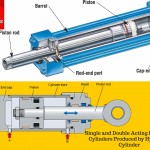The g in Oracle DBA 10g stands for “grid.” The idea is to enable software to access spare processing power across networks (grids) of inexpensive servers. Traditionally, DBA systems have been run on large servers capable of running several very large DBAs at once. However, there are distinct disadvantages inherent in the single-server model. In order to provide the computing power you need in a flexible manner. This hardware would be servers like the Intel-based blade servers, and the software would include the free (or almost free) open-source Linux operating system. By choosing small, generic servers, your system will cost much less than a traditional large server system, and because you can dynamically reallocate or provision resources based on actual needs, you’ll be using resources efficiently.

This text will not only educate you in the theory and principals involved in managing relational DBAs, it will also help you translate that theory into the useful, practical knowledge that will enable you to manage real-life Oracle DBAs with real-life data and real-life issues. Oracle data base administrator 10g a recent article by one of Oracle Corporations’ senior executives refers to Oracle DATA BASE ADMINISTATOR 10g as a “revolution in DBA technology.” I would slightly amend the statement by saying that Oracle data base administrator 10g is more an “evolution” of DBA technology—a result of several improvements Oracle has made in its flagship product over the past few years. The DBA Control, and its enterprise-wide counterpart, Grid Control, provide unsurpassed capabilities for managing the DBA. Traditionally, DBAs relied on complex SQL scripts to monitor the DBA as well as diagnose and fix performance problems. OEM now can help you do all those things and a lot more. Through its new DBA Control and Grid Control interfaces, Oracle Enterprise Manager enables the management of a single DBA or all DBAs, application servers, hosts, listeners, HTTP servers, and web applications as well.










Comments are closed.